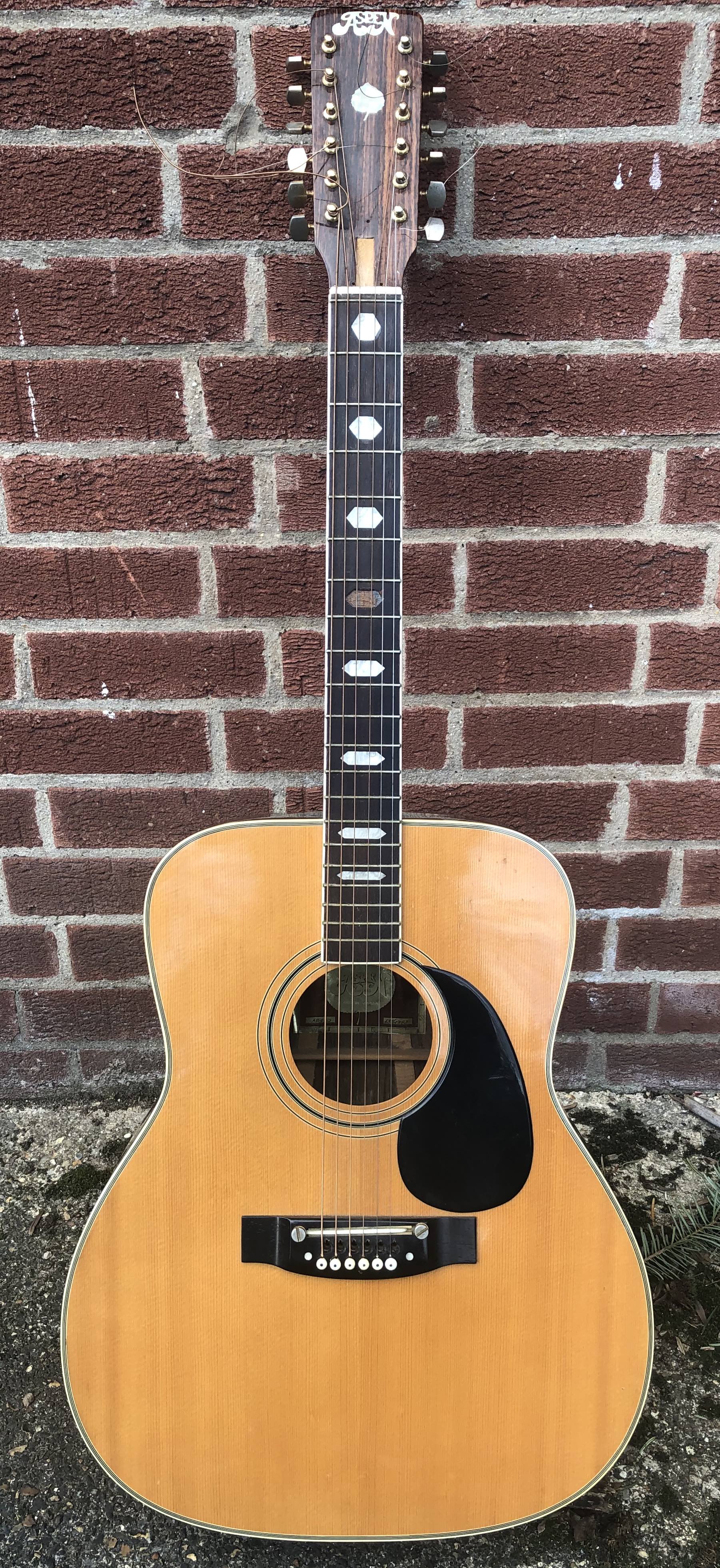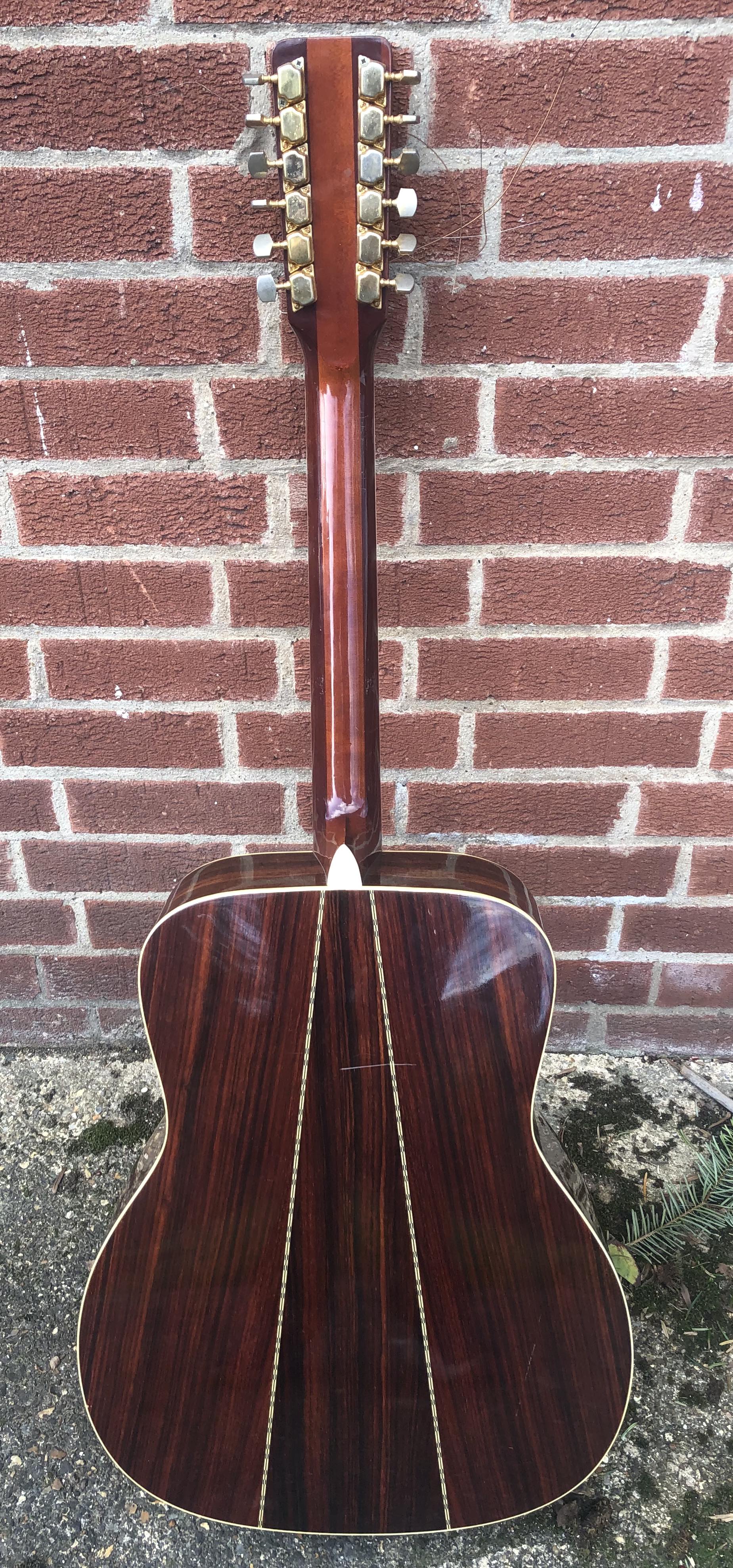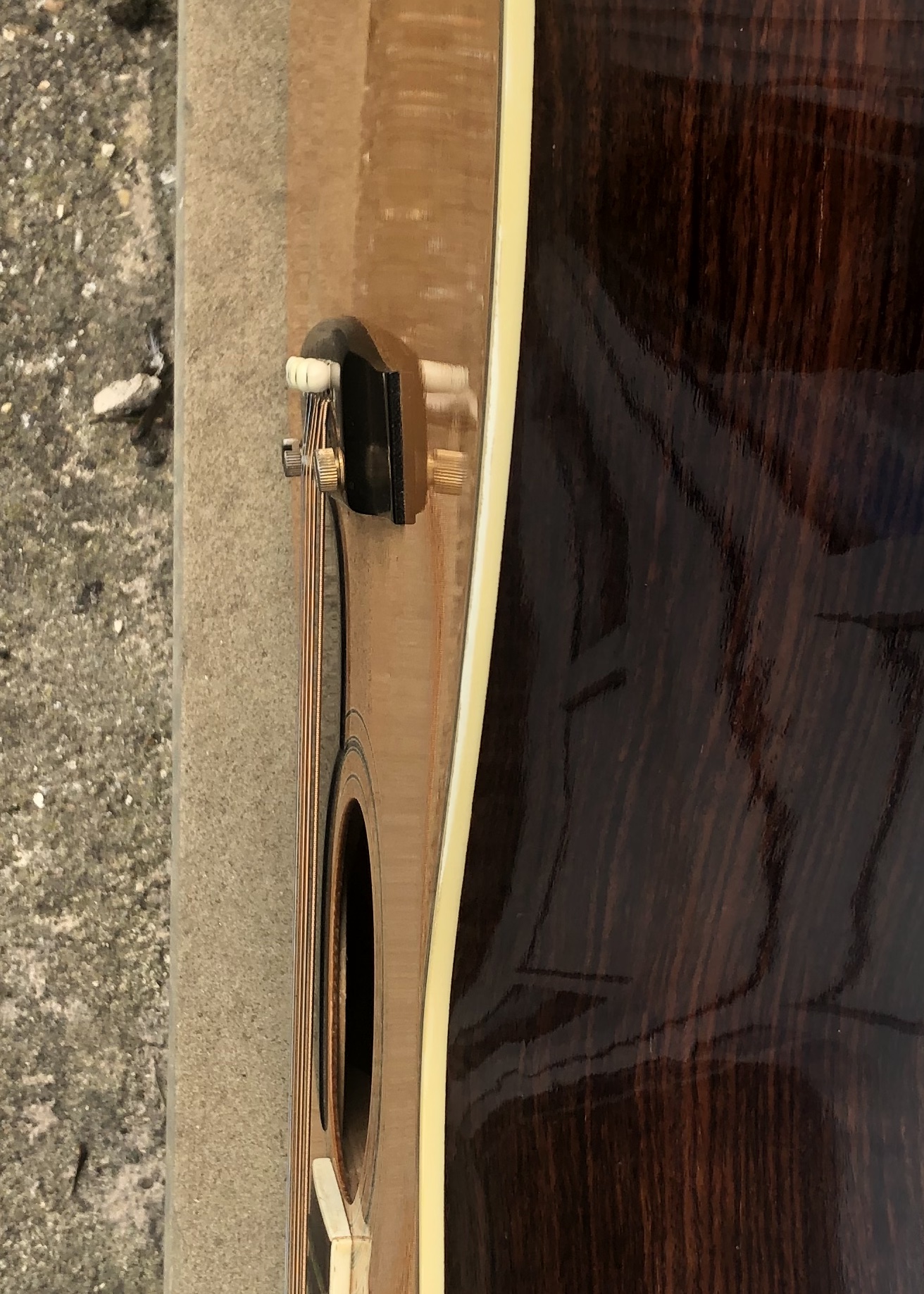Howdy, Stranger!
It looks like you're new here. If you want to get involved, click one of these buttons!
Categories
- 248.2K All Categories
- 22 >> Start Here <<
- 12 New Members
- 8 FAQs
- 88.9K Gear
- 40.5K Guitar
- 3.5K Acoustics
- 1.3K Bass
- 15.1K Amps
- 17.6K FX
- 359 Digital & Modelling
- 785 Other Instruments
- 8.5K Making & Modding
- 432 Gear Reviews
- 108 Guitar Reviews
- 74 Amp Reviews
- 119 FX Reviews
- 90 Other Reviews
- 756 Made in the UK
- 988 Theory
- 1.9K Technique
- 2.2K Live
- 3.2K Studio & Recording
- 2.2K Making Music
- 232 Events
- 15 Guitar Show 2018
- 867 Plug My Stuff
- 108.2K Classifieds
- 42.3K Guitars £
- 2.9K Acoustics £
- 146 LH Guitars £
- 925 Basses £
- 11K Parts £
- 18.8K Amps £
- 35K FX £
- 2.9K Studio & Rec £
- 6.3K Misc £
- 472 Personnel
- 56.2K Chat
- 37.5K Off Topic
- 1.2K Tributes
- 6.8K Music
In this Discussion
Become a Subscriber!
Subscribe to our Patreon, and get image uploads with no ads on the site!
Seven-string acoustic from twelve-string
I'm always in awe of the amazing projects people post in this forum. This will be very humble and cack-handed in comparison, sorry!
The back story: in this thread I floated the idea of a seven-string acoustic guitar where the extra string is in the middle of the range, rather than adding a low B or A. It's not about extending the range of the instrument, more about making it easier to play close voicings. I then realised it ought to be possible to convert a twelve-string guitar, at least as a trial project. The fingerboard on a typical twelve-string is about the right width, and it already has enough machine heads and peg holes. On paper it might be as simple as replacing the nut and saddle...
On paper.
So the first step was to buy a cheap twelve-string to act as a sacrificial lamb. I found a few likely suspects on eBay and eventually won this.


It's a Japanese copy of a Martin D35-12 from the 1970s. I found a few references to Aspen guitars on the Web and you'd think they were fragments of the True Cross. Most people seem to think they're made of solid wood throughout, and some even claim they used Brazilian rosewood.
These people are either deluded or they got a completely different guitar. It looks pretty, but as far as I can tell, it's laminate throughout, and the parts are quite cheap -- plastic nut and saddle, basic tuners, etc. The good news is that it has a truss rod which isn't jammed. The bad news is that turning the truss rod doesn't seem to change the neck relief at all. Fortunately it's only a hair too much and the neck isn't twisted.
The worse news is that like many old 12-strings, its top has started to belly. Essentially the bridge is pitching downwards towards the soundhole under the tension of the strings, and pulling up the top behind it.

The action is quite high anyway, even though the saddle is almost as low as it'll go, and the rotation of the bridge means the intonation is slightly sharp at the twelfth fret.
Good job it was cheap.
The back story: in this thread I floated the idea of a seven-string acoustic guitar where the extra string is in the middle of the range, rather than adding a low B or A. It's not about extending the range of the instrument, more about making it easier to play close voicings. I then realised it ought to be possible to convert a twelve-string guitar, at least as a trial project. The fingerboard on a typical twelve-string is about the right width, and it already has enough machine heads and peg holes. On paper it might be as simple as replacing the nut and saddle...
On paper.
So the first step was to buy a cheap twelve-string to act as a sacrificial lamb. I found a few likely suspects on eBay and eventually won this.
It's a Japanese copy of a Martin D35-12 from the 1970s. I found a few references to Aspen guitars on the Web and you'd think they were fragments of the True Cross. Most people seem to think they're made of solid wood throughout, and some even claim they used Brazilian rosewood.
These people are either deluded or they got a completely different guitar. It looks pretty, but as far as I can tell, it's laminate throughout, and the parts are quite cheap -- plastic nut and saddle, basic tuners, etc. The good news is that it has a truss rod which isn't jammed. The bad news is that turning the truss rod doesn't seem to change the neck relief at all. Fortunately it's only a hair too much and the neck isn't twisted.
The worse news is that like many old 12-strings, its top has started to belly. Essentially the bridge is pitching downwards towards the soundhole under the tension of the strings, and pulling up the top behind it.
The action is quite high anyway, even though the saddle is almost as low as it'll go, and the rotation of the bridge means the intonation is slightly sharp at the twelfth fret.
Good job it was cheap.
0 LOL 0
LOL 0 Wow! 0
Wow! 0 Wisdom
Wisdom
 LOL 0
LOL 0 Wow! 0
Wow! 0 Wisdom
Wisdom Base theme by DesignModo & ported to Powered by Vanilla by Chris Ireland, modified by the "theFB" team.


Comments
Instagram
You fit this by drilling a hole through the back of the bridge. The metal bolt passes through this hole and into the plastic cylinder, clamping the Bridge Doctor underneath the bridge with the wooden sticky-up part beneath the saddle. The long dowel then passes through the hole in the base and butts up against the end block of the guitar. By tightening another bolt you can then get it to 'push back', driving the front of the bridge up and the back downwards to correct the bellying.
The instructions are brief and a bit cryptic, but as long as you have a hand drill, it's not too hard to fit. At any rate, I managed it, and I am to luthiery what Eddie the Eagle was to ski jumping. And I have to say I'm gobsmacked by how well it works.
A few turns on the bolt have, as far as I can tell, completely flattened out the bridge:
Previously, if I ran a straight edge across the body directly behind the bridge, the centre part was at least half a centimetre above the lowest point. Now it's completely flat.
It remains to be seen how that affects the sound, but since it's a crap all-laminate 1970s guitar, it won't be like throwing soup at a masterpiece.
So I also bought new bone nut and saddle blanks from Allparts. However, I realised that the original saddle was almost completely smooth apart from one notch:
So I think I'm going to try to reuse this rather than spend hours sanding a huge blank down to size.
The nut came off without putting up too much of a fight (and the truss rod cover was missing anyway):
I don't have any proper nut files, just some cheap needle files, so I'm hoping that the zero fret will be forgiving in terms of cutting nut slots. Again, not aiming for perfection, just proof of concept.
The nut that was on the guitar was slightly too short. Not sure if that means it was a replacement. It also had glitter stuck to it, so perhaps was installed by a toddler.
After much sanding I have given myself two nasty blisters and have nearly got the new nut down to size:
(This will also reduce binding in the slot.)
A zero-fret guitar was an ideal choice for this, even if not intentional.
You're also quite right about delusional owners/sellers of most of these old Japanese-copy acoustics - they usually look much better than they actually are, and this one is not in untypical condition. Perfect for this kind of project. Just keep all the original bits in case you want to put it back at any point and nothing’s lost.
"Take these three items, some WD-40, a vise grip, and a roll of duct tape. Any man worth his salt can fix almost any problem with this stuff alone." - Walt Kowalski
"Only two things are infinite - the universe, and human stupidity. And I'm not sure about the universe." - Albert Einstein
Good luck with yours.
I made a pretty shonky job of both the nut and saddle, but in practice any problems that caused are dwarfed by the basic issues with the guitar. The action is still high and the intonation is way out on the low strings. On the plus side it actually sounds pretty good. There's plenty of volume and a nice piano-like tone with new strings.
Still getting used to it, but some observations so far:
* Even the extra width of the twelve-string neck doesn't quite make the string spacing comfortable. I feel like it needs another few mm.
* I've tried a few different tunings and the ones I've been most drawn to so far are ones that in effect have two major triads stacked in some way. Possibly my favourite is CGCEGBD, I'm also liking DADEGAC# and DADEF#AC#.
* I think I need to try boiling down these tunings to a six-string to see how much benefit I'm really getting from the extra string. I don't think I have ever tried CGCGBD on a six-string for example.